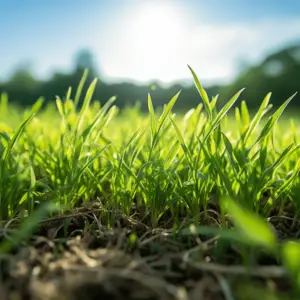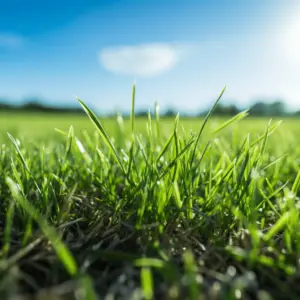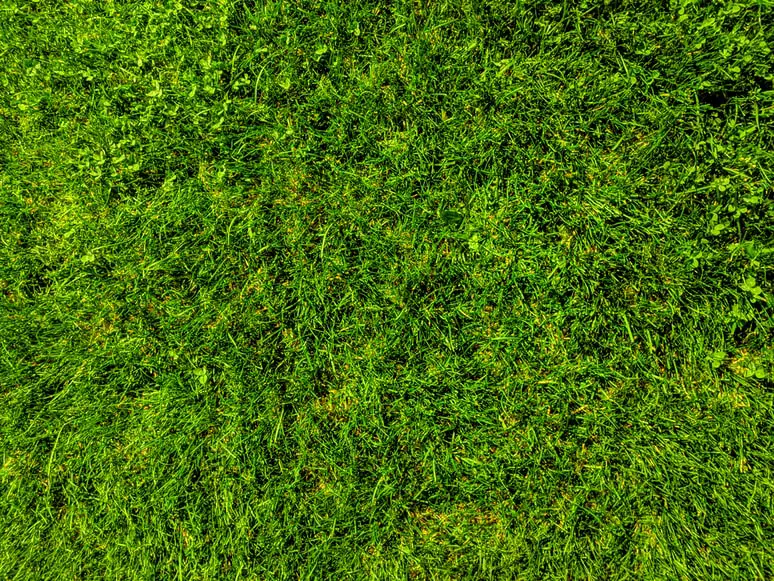Grass Seed Care, like most seeds, can last years and remain viable when polished and packed in treated sterile water and airproof packaging. Once unpacked, the grass seed must be kept away from water if there is no intention to plant it.
Again, the seeds can last years if they are stored away from moisture and heat. If they come into contact with excess dry heat, they will die and no longer be viable for planting. Moisture could cause the seeds to begin sprouting or germinating. These sprouts should be planted. If not, they will rot.
The amount of time that grass seed can go without water is dependent on various factors including weather conditions, the type of seed, the growth stage of the seed, and soil type. Grass seeds are some of the most resilient seeds and in the wild, some species have been known to go months without water and end up sprouting once conditions are optimum.
Closer home grass-covered lawns are a popular fixture in our neighborhoods. Unlike artificial, ground such as pavement, grass lawns must be worked and primed for them to appear as green, even and lovely as desired.
Selecting the ideal grass seed for your outdoors is just the first step. The grass must be planted properly and germinated which is the most critical stage of growing grass.
Table of Contents
Factors that determine how long grass seed can go without water

Once you have decided to plant the grass seed, watering is likely the most significant detail in the success or failure of your project.
Before sprouting, seeds generally persevere even when exposed to the elements outside.
It is only once they have sprouted that the grass seed needs extra care and the following factors must be taken into account.
Weather conditions
During the rainy months or in areas where rain is fairly perennial, soils are almost always moist.
If the rain persists then the soil becomes quite wet and waterlogged.
Waterlogged soil is particularly destructive to grass seed because these small swamps do not allow the grass seeds to access oxygen which is vital for their growth, especially at this stage.
Heavy rains often mean grass seeds will drown and rot. Even if the soil does not puddle, too much water creates ideal conditions for a total lack of warmth for the young shoot.
Grass seed will not sprout without warmth and if it does, the growth is stunted and slow.
If you have an automatic watering or sprinkler system as most lawns do, or if you water your grass seeds manually, pay attention to how much rain must have gone into the soil already, to avoid compounding the problem.
Skip watering if the ground beneath you feels spongy and allow rainwater to seep into the soil.
The key to watering grass seed is to maintain moisture in the soil and not water itself.
Grass seed roots are well adapted to absorbing water from fairly moist soils but will rot if there are no air pockets in the soil for them to breathe.
In hotter areas, the opposite is true. Evaporation dries the soil depriving grass seeds of essential moisture.
A general rule of thumb is that shoots must be robustly upright at any point of the day and should they be drooping or sagging, they are in urgent need of watering.
In dry or hot areas, there is almost no danger of overwatering your grass seed since a significant amount of water gets lost through evaporation so watch out for sagging shoots and water generously especially in the morning.
Type of Seed
Generally, grass can be categorized into two broad groups; cool-season or cool weather grass and, warm-season or warm weather grass. As the names suggest, they are classified based on where or when they thrive best.
To avoid planting grass every now and then, it would be better to plant the kind of grass that is agreeable to the weather you have most of the year.
Grass Seed Care are in the north where the weather is cooler and cold most of the time, plant cool weather grass. If you are in the southern areas of the country, stick to warm weather grasses.
Cool-weather grasses include Fescue, Kentucky Bluegrass, and Perrenial Ryegrass.
Some warm-weather varieties include Bermuda grass, Centipede grass, Bahia grass, Buffalo grass, and St. Augustine grass. At your local gardening store, they should have more insight into which seeds are best suited to your area.
Stage of Growth
For best results, plant grass seeds according to the directions given on the packet to avoid losing many of them to factors such as bird predation.
While still in seed form, they can go days and even weeks without water but as soon as they sprout, water is necessary. Sprouting is the most delicate stage of growth for grass seeds.
Depending on the species, sprouting takes can take anywhere between two days and two weeks.
At this stage balance is everything. Keep your lawn moist, not dry or too wet.
Grass sprouts can last a few days without water since even the tiny shoots are capable of storing water but will die off without replenishments so keep the soil moist while accounting for the permeation of air.
Soil Type

Some soils hold water better than others. This means that the type of soil you have can lose too much water too quickly, retain too much water or be just right.
Determine the soil type you have before planting your grass seed. This way you will have a firmer grasp of how much water and how frequently your grass seed need.
Water retentive soils do not require you to water the grass seeds often. It can be once a day and without evaporation, once in a few days.
Highly porous soils leech too much water and could deny your grass seed sufficient moisture.
Be sure to water sufficiently especially in the morning if evaporation will occur, instead of later in the day.
Once shoots have passed this stage, watering should not be a concern since grass is well adapted to drawing water from the soil.


